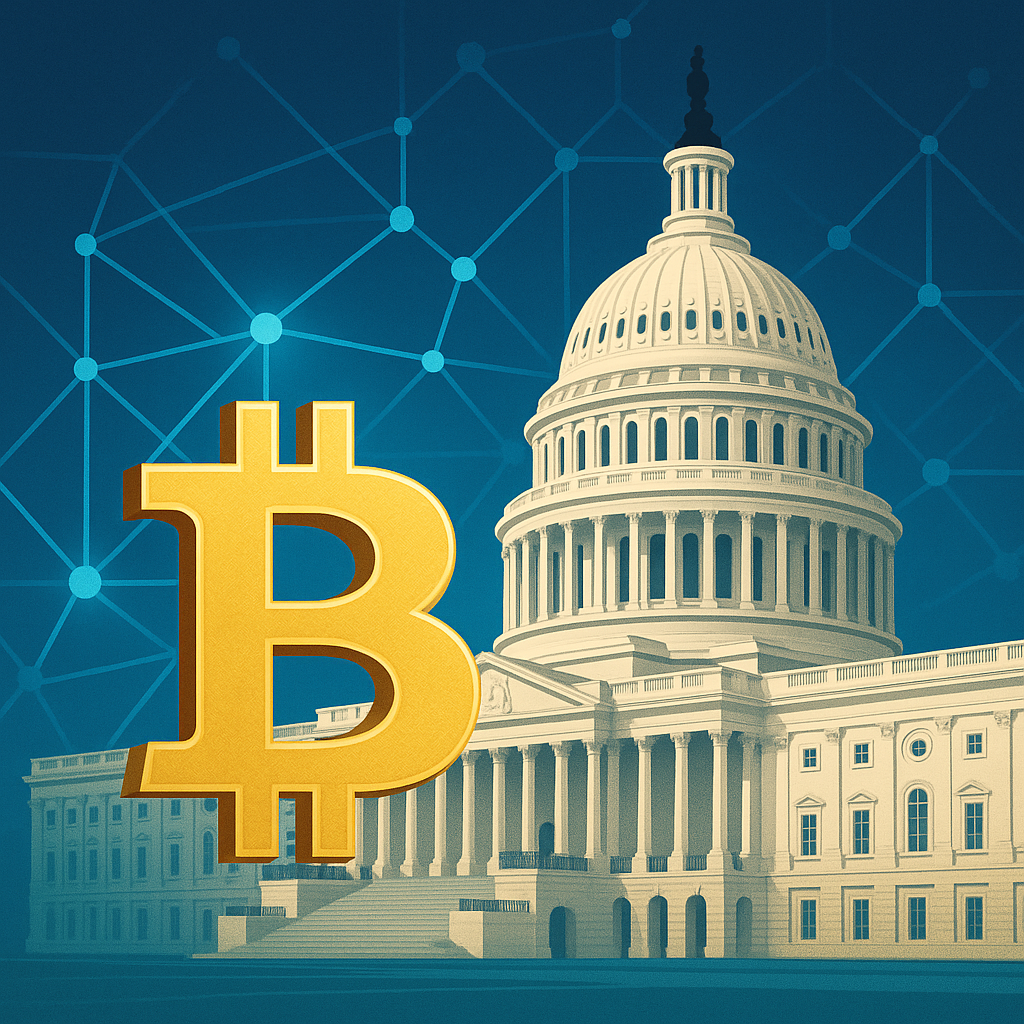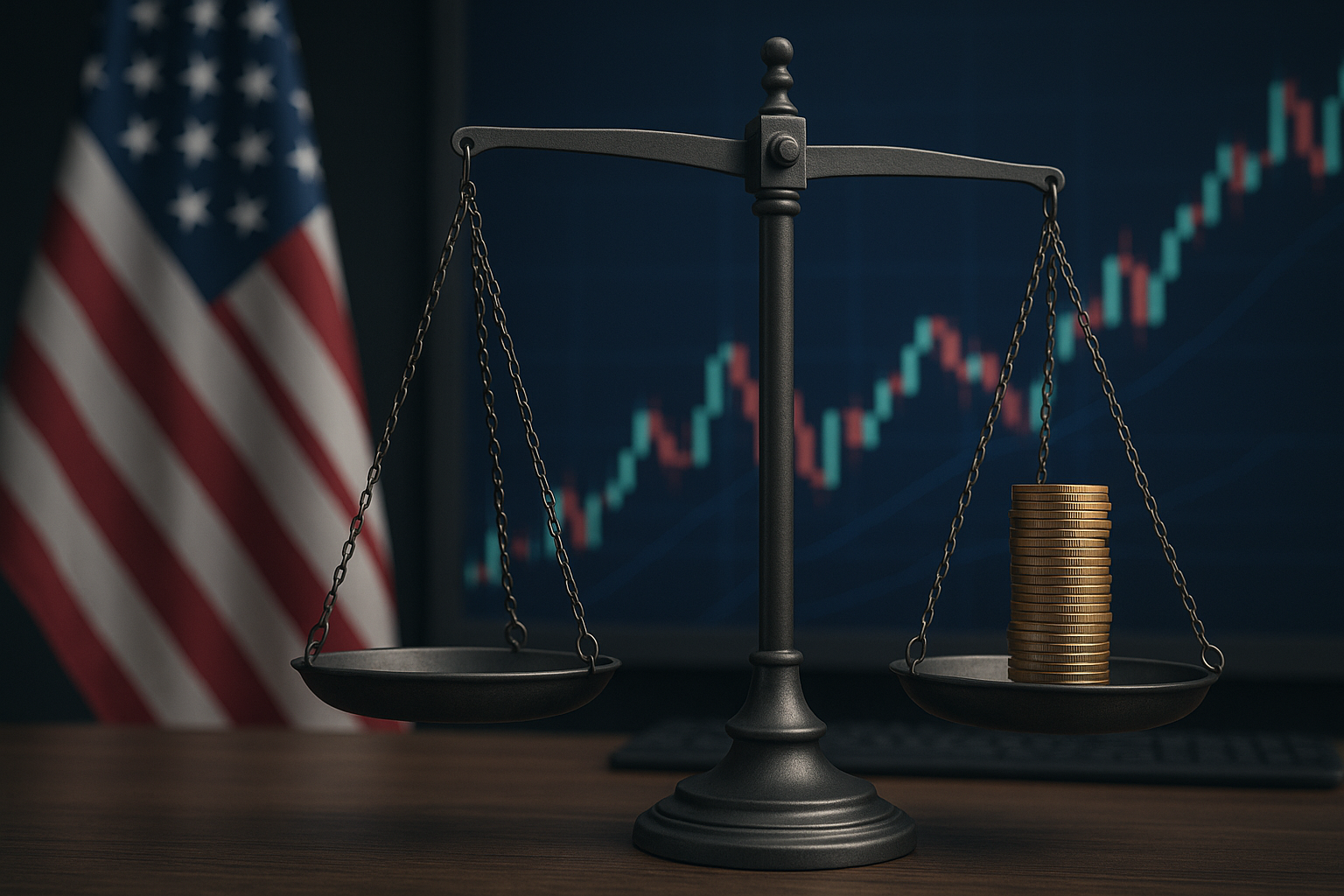Momentum is building on Capitol Hill as lawmakers push forward a series of crypto-focused bills designed to reshape the digital asset landscape in the U.S. With bipartisan support growing and institutional appetite already strong, the stage is being set for a seismic shift in how crypto is regulated, adopted, and integrated across the broader financial system.
The U.S. House of Representatives is currently reviewing several industry-friendly legislative proposals that could establish clearer legal definitions, increase investor protections, and enable greater interoperability between crypto and traditional finance. These developments aren’t just regulatory milestones—they’re market catalysts.
As the regulatory fog begins to lift, tech and fintech investors are positioning for a future where crypto is no longer a fringe asset, but a normalized component of financial infrastructure. For those with exposure to blockchain technology, digital asset platforms, or payment innovators, this could be a defining inflection point.
The Bills Making Headlines
Among the key pieces of legislation moving through Congress are:
- The Financial Innovation and Technology for the 21st Century Act (FIT21): Establishes regulatory clarity by designating digital assets as either commodities or securities, creating a framework for dual oversight by the CFTC and SEC.
- The Clarity for Payment Stablecoins Act: Focuses on integrating stablecoins into the regulated financial system with Federal Reserve and Treasury oversight.
- The Blockchain Regulatory Certainty Act: Provides safe harbor to blockchain developers and validators who do not control consumer funds, reducing the risk of overreach in enforcement actions.
- The Anti-CBDC Surveillance State Act: Limits the Federal Reserve’s authority to issue a U.S. central bank digital currency (CBDC), citing privacy and state sovereignty concerns.
These bills, some already through committee and others headed for floor debate this week, represent the most coordinated legislative approach to digital assets the U.S. has seen to date.
“The lack of clear crypto regulation has been the single biggest barrier to broader adoption,” said Jason Ballard, policy analyst at Brookings Institution, in an interview with Reuters. “These bills could unlock new levels of institutional engagement.”
Why This Matters for Investors
The implications of regulatory clarity stretch far beyond the crypto community. They signal a potential paradigm shift across the technology and finance sectors.
Institutional investors, including asset managers, pension funds, and banks, have cited the absence of regulatory consistency as a core reason for hesitancy in adopting crypto. A defined legal framework could unleash significant capital inflows into blockchain infrastructure, crypto-linked equities, and decentralized finance (DeFi) applications.
Recent data from Galaxy Digital shows institutional crypto inflows rising 27% quarter-over-quarter in anticipation of a regulatory breakthrough. Companies like Coinbase (COIN), Robinhood (HOOD), and Block Inc. (SQ)—already embedded in digital asset services—have all seen bullish sentiment since the legislation gained traction.
Beyond platforms, infrastructure enablers like Nvidia (NVDA) and Marathon Digital (MARA) may also benefit, as increased adoption drives demand for mining, computing, and tokenization solutions.
Future Trends to Watch
The convergence of crypto and traditional finance won’t happen overnight, but investors should begin monitoring the following developments closely:
- Passage or amendments to FIT21 and stablecoin frameworks
- SEC and CFTC responses and inter-agency coordination timelines
- Financial institution participation, including pilot projects and custodial offerings
- Tech-sector spillovers, especially around AI + blockchain integrations, tokenized assets, and decentralized identity platforms
With global competition heating up—as Hong Kong, the UAE, and the EU roll out crypto policies of their own—the U.S. may be feeling pressure to retain innovation leadership.
“Congress is finally realizing that this is not about Bitcoin—it’s about the next generation of financial infrastructure,” said Caitlin Long, CEO of Custodia Bank, in a July 13 briefing.
Key Investment Insight
If these bills pass—or even progress meaningfully—they could spark a capital rotation into fintech, Web3 infrastructure, and digital asset platforms. Investors should evaluate opportunities in:
- Fintechs enabling crypto wallets and payments
- Cloud and data companies serving blockchain services
- Publicly traded digital asset platforms and custody providers
- Thematic ETFs such as Global X Blockchain ETF (BKCH) or Bitwise Crypto Industry Innovators ETF (BITQ)
This is a moment to watch the legislative calendar as closely as the charts.
Stay Ahead with MoneyNews.Today
As policy begins to catch up with innovation, the digital asset space could enter a new phase of growth—and regulation may be the spark, not the brake. Whether you’re invested in tech, fintech, or blockchain, understanding what’s happening in Congress right now is crucial to staying ahead.
For real-time updates, expert insights, and market-moving analysis, follow MoneyNews.Today—your trusted source for daily investor intelligence in a changing world.





